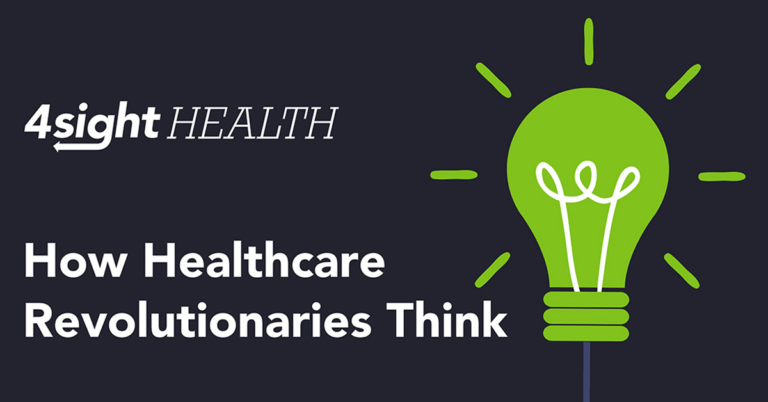May 4, 2020

Life Has Changed and So Must We
Our world has changed fundamentally from the impact of two events. The first, acute and most noxious, is COVID-19. The second, enduring and most beneficial, is the digital age. COVID-19 is terrible for health and the economy but has unwittingly served as a transformational catalyst for business and society.
A Rapid Transformation
Out of necessity caused by COVID-19, we are experiencing a rapid transformation of new ways of delivering healthcare, education, transportation, shopping, banking, culture, and even religion. No longer are face-to-face interactions and communications the norm. In 6 weeks we have rapidly accelerated adaptation of more efficient methods to produce value, defined as product or service provided divided by cost or resources consumed.
Historically, healthcare has boasted about monthly increases in total number of people employed as a measure of the industry’s contribution to the nation’s economy. According to a New England Journal of Medicine Perspective, entitled “Rethinking Health Care Labor,” labor costs typically consume 56% of a healthcare system’s budget. Following logically, more labor results in a growing expenditure, further contributing to the 18% of the GDP consumed by the healthcare sector. [1]

Imagine a healthcare industry in which over half of all healthcare encounters are digital—online, telemedicine, conference call, email, text, and so on. Traditional bricks and mortar institutions become mostly obsolete except for ER, OR, and ICU, and some beds for acute medical conditions. Yet a concerned patient could interact efficiently—connecting within a few minutes, avoiding transportation time/costs, maintaining privacy by avoiding waiting rooms, and experiencing higher level of satisfaction with the entire process.
Picturing this future is not difficult—it’s here, just not evenly distributed. Kaiser Permanente reported that in 2015 more than half of its 110 million patient interactions were e-visits—via smartphones, videoconferencing, kiosks, and other high-tech tools. Other institutions, both for-profit and not-for-profit, have advocated for telemedicine, but its implementation and reimbursement for telemedicine advanced slowly until the current crisis. [2]
In the past, physicians and organized medicine rooted in and paid by traditional fee-for-service healthcare delivery resisted using telemedicine by raising concerns. Concerns about technical impracticality, safety issues, and quality. [3] However, patient history, lab testing and imaging, supplemented by a physical exam, determine most diagnoses. [4] But now providers can even do some of the physical with the patient’s cooperation.
Focusing on the present COVID-19 pandemic, providers diagnose most COVID-19 patients remotely to protect healthcare workers and innocent bystanders from inadvertent exposure by potentially infected patients. Smartly, Center for Medicare and Medicaid (CMS) broadened access to Medicare telehealth services so that beneficiaries can access a wider range of services from their doctors without traveling to a healthcare facility. [5]
Life After COVID-19
Life after COVID-19 will probably expand use of and payment for telemedicine from commercial medical insurance companies. Including payment for treatment by providers across state borders. Decreasing cost while improving the patient experience will help everyone.
More efficiency in healthcare can reduce the expenditure on healthcare, deliver better patient outcomes and consume less of the GDP. In response to COVID-19, the industry is overcoming the large obstacles of federal and state reimbursement rules. Medicare emergently instituted reimbursement for telemedicine for its patients, who represent about 18% of the population. No one knows if CMS will codify this change after the first wave of the crisis, but surely the experience of patients and caregivers will give objective proof about the efficacy and safety of loosening restrictions. Sharing that knowledge with other medical insurers and healthcare providers will drive changes throughout the industry.
In February 2020, New England Journal of Medicine published the article “Modernizing Scope-of-Practice Regulations—Time to Prioritize Patients” that advocates for all healthcare workers to practice at the top of their licenses and competence. This advocacy is necessary because of the current, monumental disparity of rules and regulations among states, which is largely without rationale. State Boards regulate licensing, and hospital medical staff committees further restrict privileges. Different healthcare systems within the same state may have dramatically different privileges for caregivers with the same abilities and credentials. If states shared regulatory rationale, licensing and continuing education requirements, the variance and restrictions would be unnecessary. [6]
Simultaneously, teams of physicians and non-physician providers working together on patients and populations of patients with similar needs would add value. “The Problem with U.S. Health Care Isn’t a Shortage of Doctors,” published March 2020 in Harvard Business Review, exquisitely highlights the inefficiencies currently lowering the capacity of physicians and non-physician care givers. [7]
Inefficient use of labor and inflexible care models are smart areas to address when this dark period recedes. Telemedicine options enable layers of initial delivery and back-up among non-physicians and other clinicians without sacrificing standards. Having everyone adopt a more efficient platform would weed out a portion of the estimated 30+% of waste in the system—a monumental benefit. We can learn from successful ventures in telemedicine, such as Kaiser Permanente’s long experience or CMS’s current initiative.
Successful Endeavors from Other Industries
Successful endeavors from other industries serve as strong examples of best practices as we combat Covid-19. Restaurants, banks, universities, religious institutions, and even museums are changing their operations—meeting people where they are at home, online. For example, the National Portrait Gallery features the U.S. Presidents with accompanying dialog. Teachers and students at all levels are now online together, learning new technology while they focus on traditional subject matter.
Healthcare faces more challenges than any other segment of society. Healthcare workers have a history of volunteering for hazardous duty and take an oath to do so. More nurses died of infectious diseases in the Crimean War caring for soldiers than soldiers died in battle. Our nation can protect healthcare workers, improve efficiency, and provide better care as we embrace all the technology currently available.
Sources:
- “Rethinking Healthcare Labor,” by Robert Kocher and Nikhil Sahni, NEJM October 2011.
- “The Future of Remote Monitoring Patients,” by Ameya Kulkarni, Kaiser Permanente Corporate Communications, July 2018.
- “The History of Remote Monitoring,” by Vera Gruessner, mHealth Intelligence, November 2015.
- “Relative Contributions of History Taking, Physical Examination, and Laboratory Investigations to Diagnosis and Management of Medical Outpatients,” by JR Hampton, MJ Harrison, JR Mitchell, JS Prichard, and C. Seymour, Br. Med. J., May 1975.
- “Medicare Telemedicine Health Care Provider Fact Sheet,” CMS, March 2020.
- “Modernizing Scope-of-Practice Regulations—Time to Prioritize Patients,” by Bianca Frogner, Erin Fraher, Joanne Spetz, Patricia Pittman, Jean Moore, Angela Beck, David Armstrong, and Peter Buerhaus, NEJM February 2020.
- “The Problem with U.S. Health Care Isn’t a Shortage of Doctors,” by Christopher Kerns and Dave Willis, Harvard Business Review, March 2020.





